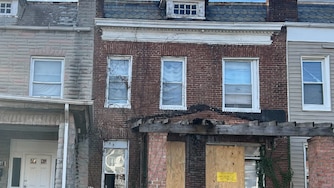The design of the Key Bridge was not the reason it collapsed when the massive container ship, the Dali, slammed into one of the bridge’s main support piers on Tuesday morning, but it helps explain why the structure gave way within seconds after impact.
The Key Bridge was one of only 17,000 bridges in the country, about 3%, characterized as having a “fracture critical” design, meaning if one portion sustained enough damage, the entire structure would collapse.
“The preferred method for building bridges today is that there is redundancy built in,” Jennifer Homendy, chair of the National Transportation Safety Board, which is leading the investigation into the collapse, said at a press conference Wednesday evening. “This bridge did not have redundancy.”
Six construction workers fell to their death in the collapse, all of them Latino immigrants, ranging from ages 26 to 49.
After the Key Bridge’s collapse, there are now 305 “fracture critical” bridges standing in Maryland, or 5.6% of the state’s 5,473 bridges. The state ranks eighth in the country for the percentage of fracture critical bridges, according to a Banner data analysis.
The Chesapeake Bay Bridge, connecting the Eastern Shore to the rest of Maryland, is one of them.
Read More
Dave Beck, an engineer who assisted with finding mistakes in the Big Dig project in Boston, said the “fracture critical” nature of the Key Bridge meant one failure can trigger a total collapse.
“If you have a rubber band and you stretch it, and it breaks, imagine that same thing on a piece of steel,” Beck said.
‘No hesitation’
While there isn’t much question that the collapse of the Key Bridge was caused by the Dali’s strike to one of its main support piers, the “second phase” of the investigation might involve looking at how the bridge reacted, including how quickly it went down — within six seconds, according to the NTSB.
Beck referenced a 2022 bridge collapse in Pittsburgh, the 447-foot Fern Hollow bridge, which collapsed with six vehicles on or near it. Beck said that bridge, nearly half the size of the Key Bridge’s major span, took 10 seconds to fall.
The Fern Hollow bridge had corrosion that weakened connections to 25% percent of their thickness, Beck said. The NTSB found that clogged drains caused water to run down bridge legs and cause corrosion.
“Is the speed of the collapse attributable to weakened connections or the design itself? That’s part of the evaluation,” Beck said.
Abi Aghayere, a professor of structural engineering at Drexel University, emphasized how the Key Bridge collapsed with “no hesitation.”
“I would have expected the bridge to at least sag a little bit, give room for folks to escape the bridge,” Aghayere said. “That did not happen in this case.”
Aghayere said the type of collapse is known in engineering circles as “brittle failure.”
“It happens without warning, it happens suddenly, and it doesn’t give you room,” Aghayere said. “That is opposed to the way we design structures.”
Modern engineering standards emphasize redundancies and, design structures so to shoulder excessive loads and fail in a “ductile failure.”
That buys time for people who might be in buildings or on bridges as they experience failures.
“Maybe something hits it, maybe the load is excessive,” Aghayere said. “It will deflect a lot, but it will not necessarily fail. It will be carrying that deflection for a long time. ... It gives you time to get out of or off the structure before it actually falls.”
A broader failure
Fracture critical bridges have become far less common over time, according to a Banner analysis of federal data.
On average, Maryland’s bridges are 52 years old, slightly older than the national average of 47 years, ranking Maryland 14th for oldest bridges.
Investigations into the August 2007 collapse of a Minneapolis bridge along Interstate 35W found a structural deficiency that led to its demise. The bridge was fracture critical.
In the wake of its collapse, the Federal Highway Administration issued guidance around such fracture critical bridges. Maryland surveyed the majority of its bridges along these guidelines and found no structural deficiencies for both the Key and Chesapeake Bay bridges, according to a former state transportation official.
But engineering experts also said bridges designed in other ways could have been similarly damaged by a ship strike like the Dali’s.
“Even a bridge that’s not fracture critical would be susceptible to the loss of a support causing a major collapse,” said Linwood Howell, an Austin-based engineer who has worked as a contractor inspecting bridges.
In the case of the Key Bridge collapse, Howell said that the fracture critical design caused a “broader failure,” meaning the loss of the support affected a wider area than it might have otherwise, like a chain reaction.
“That’s why engineers are being asked to pay more attention to redundancies that prevent progressive collapse,” Howell said.
More redundancies would allow the bridge to be insulated from a failure in one section leading to failures in other sections, engineers said.
Beck, the New Hampshire engineer, predicted that a replacement bridge would likely be supported by cables and giant towers, allowing fewer piers and bigger spans to add height.
That is a common way to build bridges now, Beck said, which would make construction more efficient.
The Pittsburgh bridge that collapsed, which was less than half the Key Bridge’s size, took 11 months to replace, he said.
He anticipated replacing the Baltimore bridge would take two or three years.




Comments
Welcome to The Banner's subscriber-only commenting community. Please review our community guidelines.